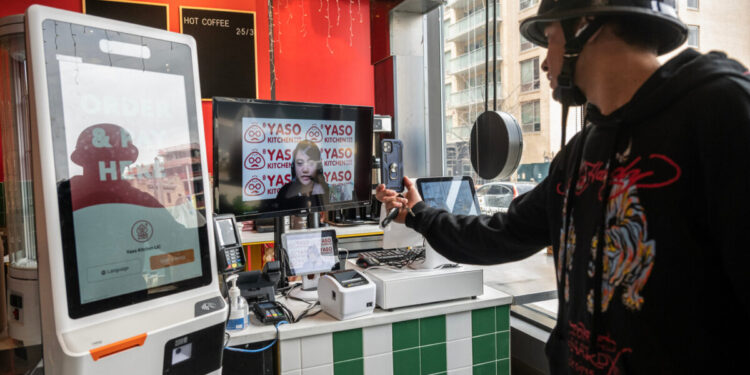Some restaurants in New York City are employing remote cashiers based in the Philippines, who take orders and process payments via Zoom from abroad.
These remote cashiers are reportedly paid around $3.75 per hour, in contrast to the local New York City minimum wage of about $16 per hour.
The service is provided through a third-party staffing firm that enables restaurants to operate point-of-sale terminals with video link-ups to workers overseas.
The $3.75 hourly wage for Philippines-based workers represents less than 25% of New York City’s $16 minimum wage, creating massive labor cost savings for restaurants struggling with thin profit margins but raising questions about wage arbitrage exploiting international pay disparities.
The Zoom-based remote cashier model demonstrates how digital connectivity enables service sector job offshoring previously impossible when customer-facing roles required physical presence, potentially disrupting entry-level employment opportunities for New York workers.
The third-party staffing firm structure allows restaurants to avoid direct employment relationships with overseas workers, potentially sidestepping labor law compliance, benefits obligations, and liability concerns that would arise from hiring international employees directly.
The legality of the arrangement depends on whether remote cashiers are classified as independent contractors or employees, whether they work for the staffing firm or restaurants, and how labor laws apply to video-mediated transactions crossing international borders.
Philippines workers earning $3.75 per hour likely receive above-average wages by local standards in a country where per capita income is substantially lower than the United States, though the arrangement still represents wage exploitation from the perspective of New York labor markets.
The video link-up point-of-sale integration requires reliable high-speed internet on both ends, suggesting the model works best for fast-casual restaurants with digital ordering systems rather than full-service establishments requiring complex in-person customer service.
Seattle restaurant owners facing similar labor cost pressures and minimum wage requirements ($19.97 per hour for large employers in 2025) may adopt similar offshore cashier models if the practice proves legally sustainable and operationally effective in New York.
The remote cashier trend parallels other service sector offshoring like customer service call centers, medical billing, and technical support, extending gig economy principles to food service in ways that undermine local employment while providing cheap labor to cost-conscious businesses.
Language barriers and time zone differences create potential challenges, though Philippines workers often speak fluent English and the time difference (12-13 hours) means overnight shifts there coincide with New York business hours, creating operational compatibility.
The practice raises ethical questions about whether restaurants should prioritize lowest-cost labor regardless of geographic arbitrage impacts on local workers, or whether community businesses have obligations to provide jobs for neighborhood residents at prevailing local wages.







